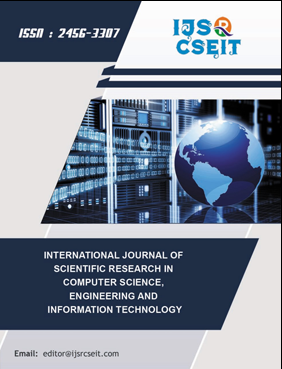Hybrid Machine Learning Approach for Mosquito Species Classification Using Wingbeat Analysis
DOI:
https://doi.org/10.32628/CSEIT2410312Keywords:
Mosquito-Borne Illnesses, Hybrid Machine-Learning Technique, Wingbeat Analysis, Machine Learning Methods, KNN, Random Forest, MLP, SVM, Gradient BoostingAbstract
Effective and precise techniques for mosquito species identification are required as mosquito-borne illnesses continue to pose serious threats to public health across the world. We provide a new hybrid machine-learning technique in this research work for the classification of mosquito species through the Wingbeat analysis. It analyzes the wingbeat of the mosquito species based on which it can identify the mosquito species. This method makes use of deep learning techniques. The hybrid technique attempts to provide robust and dependable classification performance by utilizing a wide range of machine learning methods, such as k-Nearest Neighbors (KNN), Random Forest, Multi-layer Perceptron (MLP), Support Vector Machines (SVM), and Gradient Boosting. To improve feature extraction and normalization, we apply a rigorous set of preprocessing techniques to a large dataset that includes wingbeat recordings from many mosquito species. By means of comprehensive testing and analysis, we prove that our method is effective in correctly detecting mosquito species, exhibiting better results than using separate machine learning algorithms. Our findings demonstrate how deep learning methods may support more conventional machine learning strategies in problems involving the categorization of mosquito species. We also address the implications of our results for ecological research and disease management initiatives, highlighting the significance of precise species identification in vector monitoring and epidemiological investigations.
📊 Article Downloads
References
E. Fanioudakis, M. Geismar, and I. Potamitis, "Mosquito wingbeat analysis and classification using deep learning," in 2018 26th European Signal Processing Conference (EUSIPCO), 2018, pp. 2410-2414: IEEE. DOI: https://doi.org/10.23919/EUSIPCO.2018.8553542
H. Caraballo and K. J. E. m. p. King, "Emergency department management of mosquito-borne illness: malaria, dengue, and West Nile virus," vol. 16, no. 5, pp. 1-23; quiz 23, 2014.
L. K. Hapairai et al., "Evaluation of traps and lures for mosquito vectors and xenomonitoring of Wuchereria bancrofti infection in a high prevalence Samoan Village," vol. 8, pp. 1-9, 2015. DOI: https://doi.org/10.1186/s13071-015-0886-2
R. Lühken et al., "Field evaluation of four widely used mosquito traps in Central Europe," vol. 7, pp. 1-11, 2014. DOI: https://doi.org/10.1186/1756-3305-7-268
G. l'Ambert, J. B. Ferré, F. Schaffner, and D. J. J. o. V. E. Fontenille, "Comparison of different trapping methods for surveillance of mosquito vectors of West Nile virus in Rhône Delta, France," vol. 37, no. 2, pp. 269-275, 2012. DOI: https://doi.org/10.1111/j.1948-7134.2012.00227.x
J. C. Koella, F. L. SÖrensen, and R. A. J. P. o. t. R. S. o. L. S. B. B. S. Anderson, "The malaria parasite, Plasmodium falciparum, increases the frequency of multiple feeding of its mosquito vector, Anopheles gambiae," vol. 265, no. 1398, pp. 763-768, 1998. DOI: https://doi.org/10.1098/rspb.1998.0358
H. Kampen et al., "Approaches to passive mosquito surveillance in the EU," vol. 8, pp. 1-13, 2015. DOI: https://doi.org/10.1186/s13071-014-0604-5
E. Joelianto et al., "Convolutional neural network-based real-time mosquito genus identification using wingbeat frequency: A binary and multiclass classification approach," vol. 80, p. 102495, 2024. DOI: https://doi.org/10.1016/j.ecoinf.2024.102495
T. H. Truong, H. Du Nguyen, T. Q. A. Mai, H. L. Nguyen, and T. N. M. J. E. I. Dang, "A deep learning-based approach for bee sound identification," vol. 78, p. 102274, 2023. DOI: https://doi.org/10.1016/j.ecoinf.2023.102274
Q. Tang, L. Xu, B. Zheng, and C. J. E. I. He, "Transound: Hyper-head attention transformer for birds sound recognition," vol. 75, p. 102001, 2023. DOI: https://doi.org/10.1016/j.ecoinf.2023.102001
M. S. Fernandes, W. Cordeiro, M. J. C. i. B. Recamonde-Mendoza, and Medicine, "Detecting Aedes aegypti mosquitoes through audio classification with convolutional neural networks," vol. 129, p. 104152, 2021. DOI: https://doi.org/10.1016/j.compbiomed.2020.104152
A. L. Wilson et al., "The importance of vector control for the control and elimination of vector-borne diseases," vol. 14, no. 1, p. e0007831, 2020. DOI: https://doi.org/10.1371/journal.pntd.0007831
D. Karuppaiah, "A Hybrid Network Combining Cnn and Transformer Encoder to Classify Mosquitoes Based on Wing Beat Frequencies."
A. A. Siddiqui and C. Kayte, "Transfer Learning for Mosquito Classification Using VGG16," in First International Conference on Advances in Computer Vision and Artificial Intelligence Technologies (ACVAIT 2022), 2023, pp. 471-484: Atlantis Press. DOI: https://doi.org/10.2991/978-94-6463-196-8_36
K. Mostafa, M. Hany, M. Carnaghi, R. J. Hopkins, and A. Atia, "Aedes aegypti mosquito movements analysis and sex classification using computer vision and deep learning," in 2024 6th International Conference on Computing and Informatics (ICCI), 2024, pp. 261-267: IEEE. DOI: https://doi.org/10.1109/ICCI61671.2024.10485146
Downloads
Published
Issue
Section
License
Copyright (c) 2024 International Journal of Scientific Research in Computer Science, Engineering and Information Technology

This work is licensed under a Creative Commons Attribution 4.0 International License.




